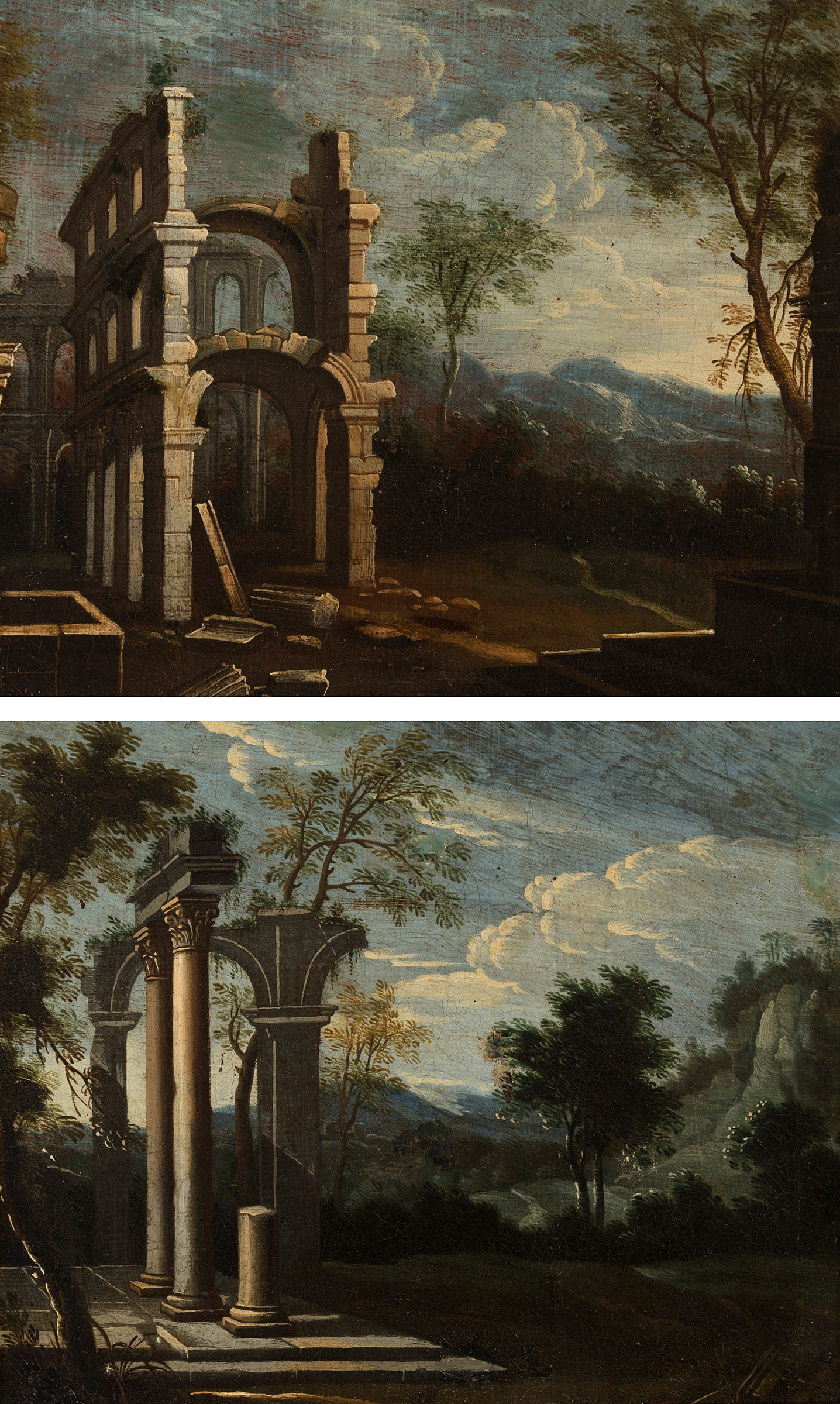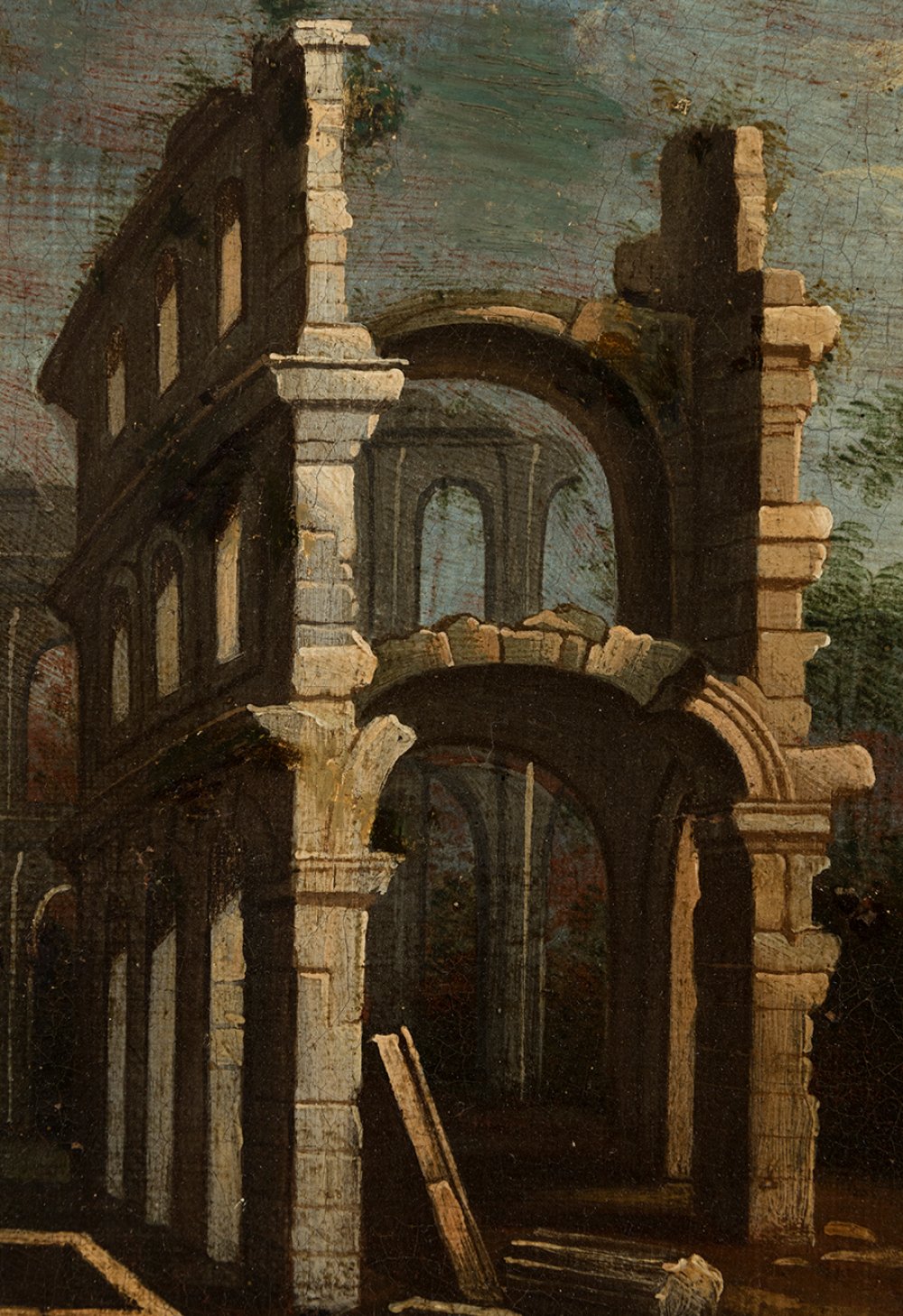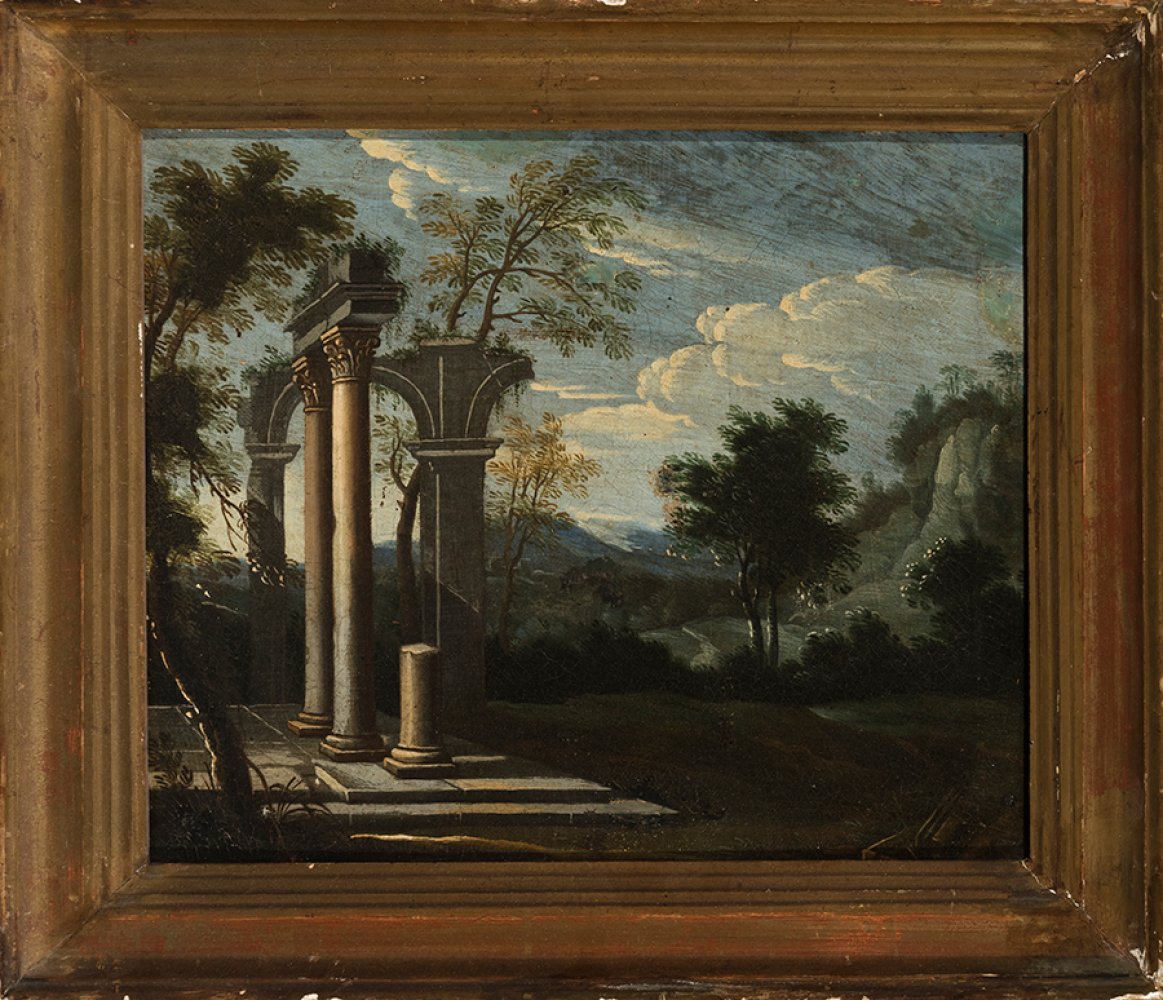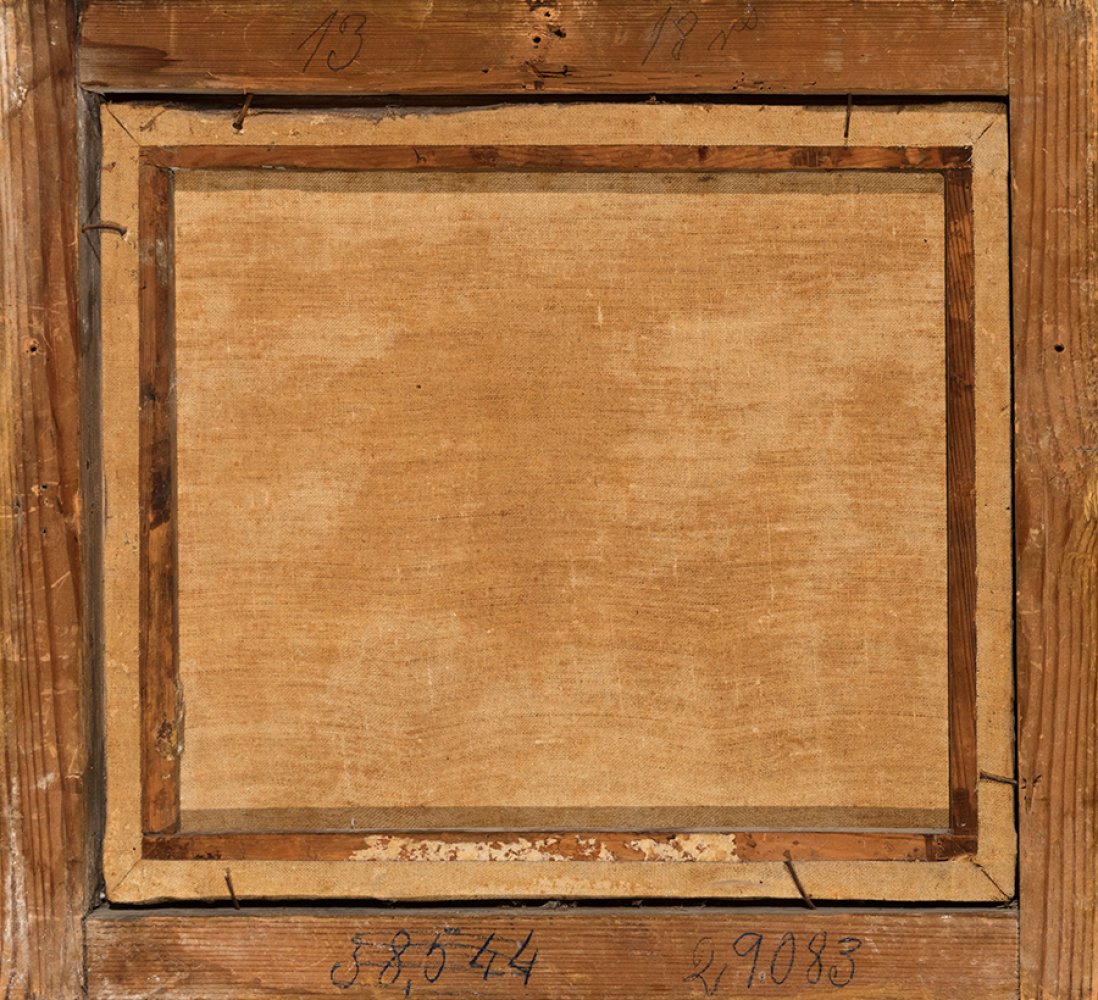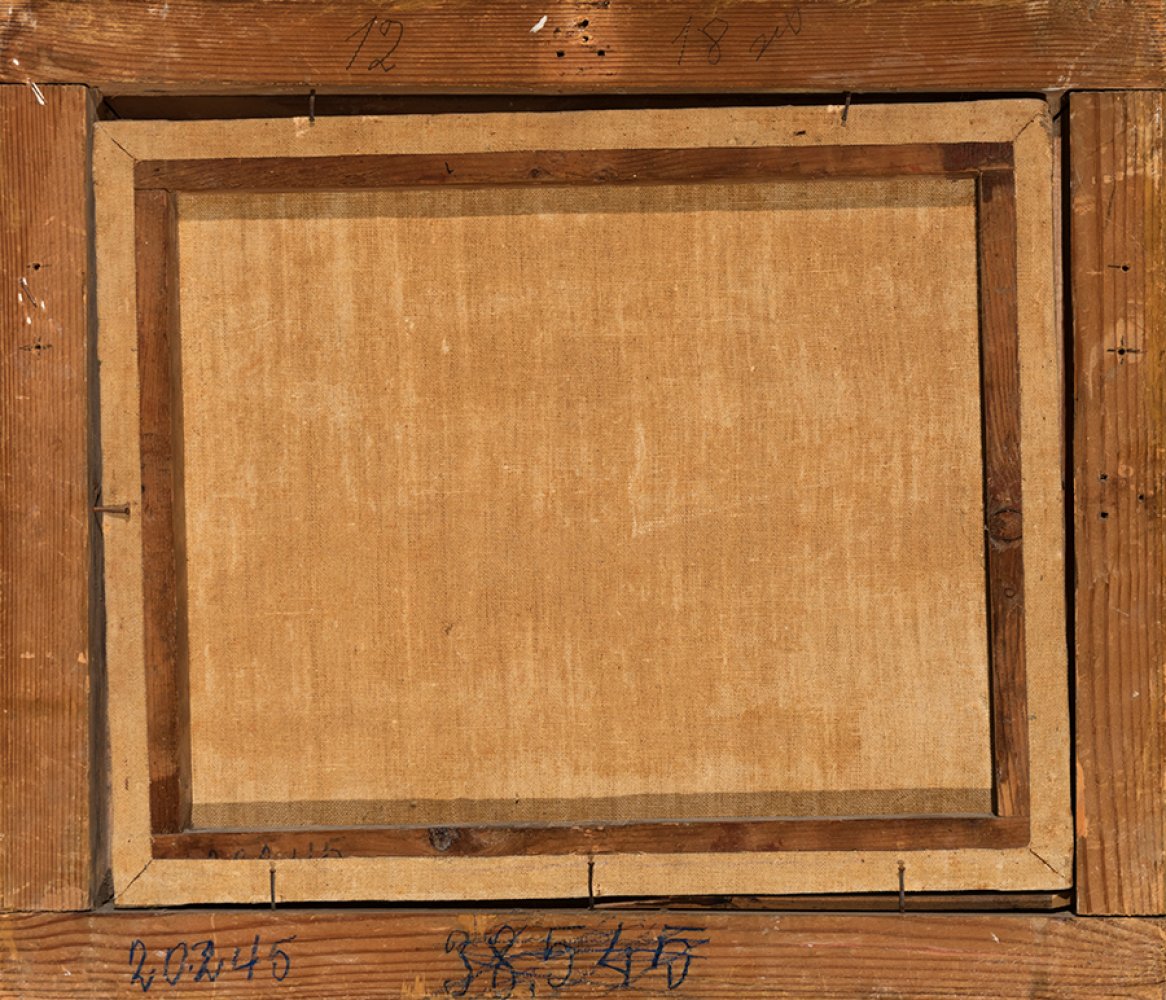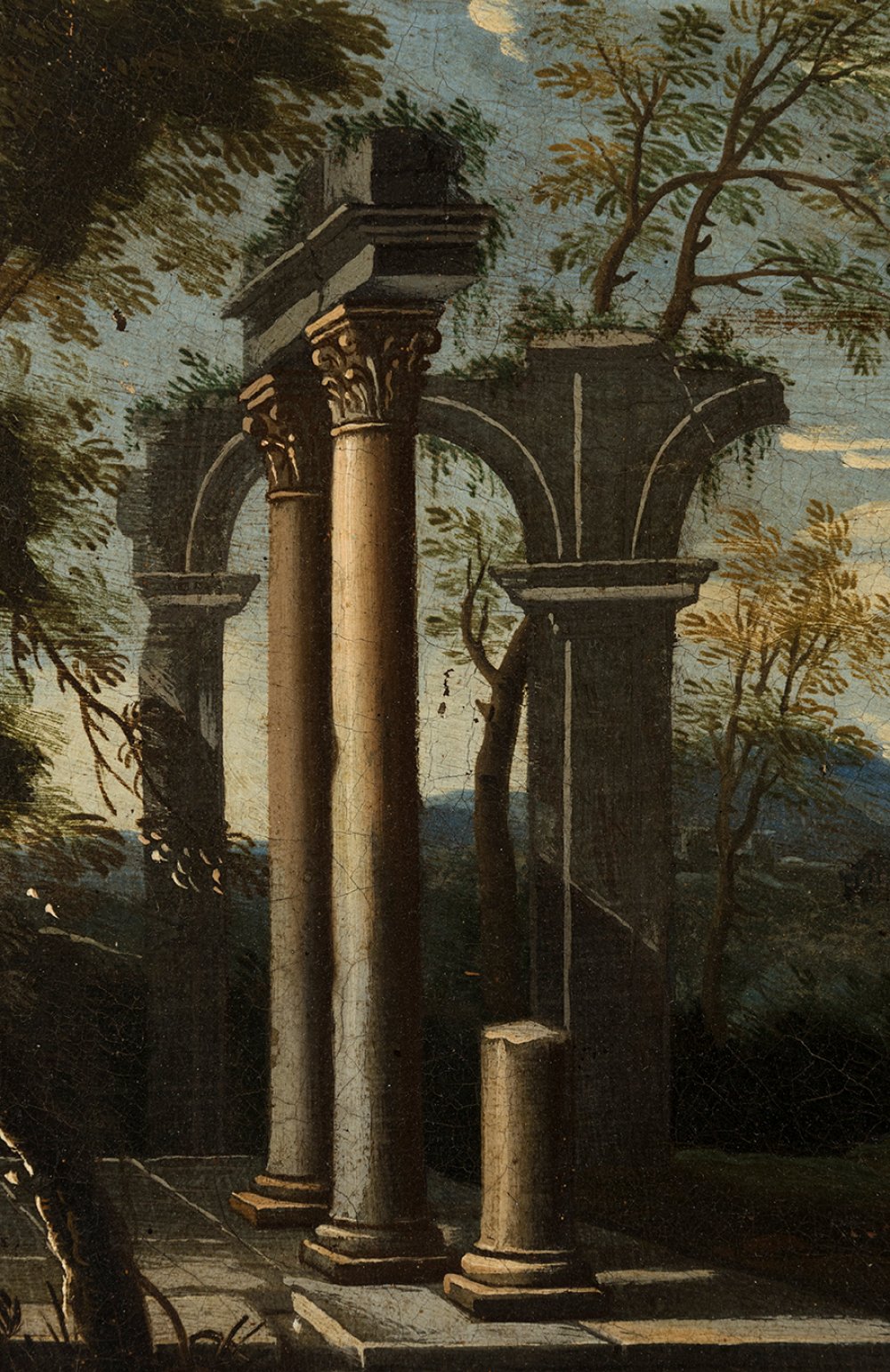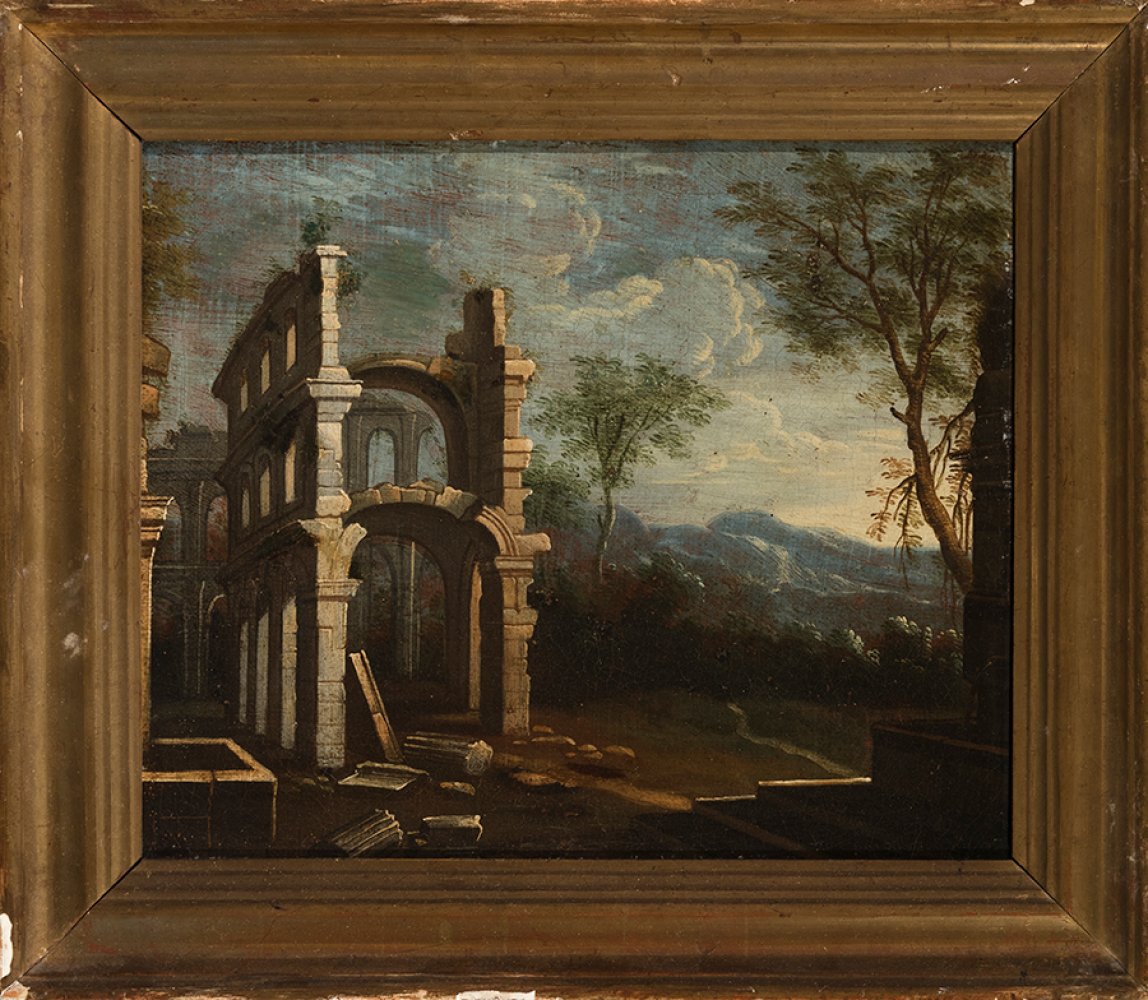56
Italian school; 18th century."Ancient ruins".Pair of oils on canvas. Re-coloured.Slight repainting.
"Ancient ruins".
Pair of oils on canvas. Re-coloured.
Slight repainting.
They have 19th century Spanish frames.
Measurements: 29 x 35 cm (x2); 37 x 43 cm (frames, x2).
These "Vedutas" or "Caprichso" offer us a panoramic landscape constructed from the reproduction of various classical style monuments, to which the romantic concept of ruin is added. The works in question show an idealised landscape in which a series of ruins of clear Roman influence stand out, such as the remains of a temple located to the left, in both cases
. With regard to the landscape genre, it is worth mentioning how, apart from the Venetian "veduta" model, in 17th-century Italy the type we see here prevailed, a landscape that starts from the classicist model created by the Carracci and evolves along monumental and architectural lines. The genre of the landscape view with ruins or classical monuments, real or invented, enjoyed great success from the 19th century onwards, especially in the wake of Romanticism. The taste for the artistic remains of the past, the widespread travel by writers and artists in search of monuments and works of art that could serve as a source of inspiration, and the discovery of important ancient remains such as those of the cities of Pompeii and Herculaneum undoubtedly contributed to the success of the genre. It is a pictorial genre, moreover, which has its roots in the 17th century, in the veduta, not always topographical but sometimes extremely imaginative, of artists such as Canaletto and others. During Romanticism, the ruin was the most evocative and real representation of the past. While in France theories such as those of Viollet le Duc advocated a historical reconstruction of ruined buildings, England defended the supremacy of the ruin. This English theory had its greatest representative in the figure of the scholar John Ruskin who, in his work The Stones of Venice, reflects his aesthetic ideas about ruins.
"Ancient ruins".
Pair of oils on canvas. Re-coloured.
Slight repainting.
They have 19th century Spanish frames.
Measurements: 29 x 35 cm (x2); 37 x 43 cm (frames, x2).
These "Vedutas" or "Caprichso" offer us a panoramic landscape constructed from the reproduction of various classical style monuments, to which the romantic concept of ruin is added. The works in question show an idealised landscape in which a series of ruins of clear Roman influence stand out, such as the remains of a temple located to the left, in both cases
. With regard to the landscape genre, it is worth mentioning how, apart from the Venetian "veduta" model, in 17th-century Italy the type we see here prevailed, a landscape that starts from the classicist model created by the Carracci and evolves along monumental and architectural lines. The genre of the landscape view with ruins or classical monuments, real or invented, enjoyed great success from the 19th century onwards, especially in the wake of Romanticism. The taste for the artistic remains of the past, the widespread travel by writers and artists in search of monuments and works of art that could serve as a source of inspiration, and the discovery of important ancient remains such as those of the cities of Pompeii and Herculaneum undoubtedly contributed to the success of the genre. It is a pictorial genre, moreover, which has its roots in the 17th century, in the veduta, not always topographical but sometimes extremely imaginative, of artists such as Canaletto and others. During Romanticism, the ruin was the most evocative and real representation of the past. While in France theories such as those of Viollet le Duc advocated a historical reconstruction of ruined buildings, England defended the supremacy of the ruin. This English theory had its greatest representative in the figure of the scholar John Ruskin who, in his work The Stones of Venice, reflects his aesthetic ideas about ruins.
13th October - Old Masters
Sale Date(s)
Venue Address
General delivery information available from the auctioneer
Setdart offers Worldwide shipping
PICK UP IN ROOM: You can come and pick up your lots in our offices (Barcelona, Madrid or Valencia). At the moment of the withdrawal, you will be able to accept the current conditions of the lot by means of a document that you will sign.
YOU CAN SEND ANOTHER PERSON TO PICK UP: This person must present a signed authorization that you can find in our web page by accessing from BUY AT SETDART- LOGISTICS-DOWNLOAD AUTHORIZATION DOCUMENT. You can also send an e-mail with the requested data in AUTHORIZATION DOCUMENT to admin@setdart.com
Important Information
25% buyer´s premium
21% buyer´s premium at www.setdart.com
Terms & Conditions
The maximum period to pay the lots is 7 working days. You can pay either via bank transfer or with credit card through our platform www.setdart.com (we only accept VISA or Mastercard).
BUYER´S PREMIUM: 22% Hammer price + 21% VAT from the buyer´s premium
If your piece has more than 100 years, our Ministry of Culture requires an export certificate in order for the piece to leave the country. Note that if the piece goes inside the EU, there is no cost for the export certificate. If the piece goes outside the EU, there is a cost for the export certificate. You can find more information in our Ministry of Culture website: https://www.culturaydeporte.gob.es/en/cultura/patrimonio/exportacionimportacion/exportacion/tasas.html
INQUIRIES: admin@setdart.com
Setdart guides you through the entire process, from the time of award to the day you receive your lot. Our logistics team will be happy to manage your transport, and will advise you on the best shipping method with professionals from the sector used to handling works of art and jewelry.
WE OFFER WORLDWIDE DOOR TO DOOR SHIPPING
PICK UP IN ROOM: You can come and pick up your lots in our offices. At the moment of the withdrawal, you will be able to accept the current conditions of the lot by means of a document that you will sign.
YOU CAN SEND ANOTHER PERSON TO PICK UP: This person must present a signed authorization that you can find in our web page by accessing from BUY AT SETDART-LOGISTICS-DOWNLOAD AUTHORIZATION DOCUMENT. You can also send an e-mail with the requested data in AUTHORIZATION DOCUMENT to admin@setdart.com
SETDART IS NOT RESPONSIBLE FOR THE STATE OF THE PARTS ONCE THEY LEAVE OUR FACILITIES. MRW SHIPMENTS: Once the payment is made, your lot will be packed for shipment, the logistics department will send you an e-mail notifying you of the day it leaves our warehouse, changes of address cannot be made after receiving this e-mail.
INSURANCE INCIDENTS: Coverage for the value of the auction up to 3000 ? per shipment, if the value of the auction is higher, Setdart will send you a quote including the additional insurance. The insurance company WILL NOT BE RESPONSIBLE FOR THE SHIPMENT THAT EXCEEDS THAT AMOUNT AND IS NOT FULLY INSURED. MRW INCIDENTS: Maximum notification 48 hours after receipt, after which the insurance company WILL NOT BE RESPONSIBLE AND NO CLAIMS WILL BE ACCEPTED.
E-MAIL LOGISTICS: logistica@setdart.com
PICK UP YOUR MESSAGES: You can send your own messaging, prior notice via e-mail that your shipment is ready, please note 3 or 4 days in advance. This type of shipment is packaged so Setdart will provide you with a quote.
EXPENSES FOR STORAGE: We inform you that if the purchased lot is not picked up within a month, you will be charged 30€ per week per lot. Setdart Online S.L., owner of the web site "setdart.com", "setdart.net" and "setdart.org", acts as a company of Spanish nationality inscribed in the Volume 36955, sheet 182, page B-293056 of the Mercantile Registry, with registered office at Calle Aragó















